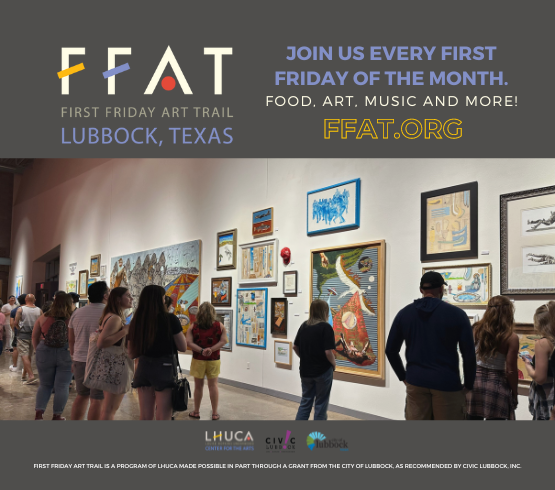For all the glories of Carmen, La Boheme, Aida and the like, opera companies sometimes want to tackle a work that’s out-of-the-ordinary: Call it a statement opera. The urge came upon The Dallas Opera before the pandemic.
“Obviously, the musical aspect is something that always excites us,” Derrer continues. “But also, what is the drama associated with it? What is the visual appeal and the storytelling that we can bring together?”
Derrer and Emmanuel Villaume, the company’s music director, gravitated toward the composer synonymous with the epic scale. “Both Emmanuel and I … love big opera. We love Wagner,” Derrer declares.
Meanwhile, Atlanta Opera—whose general director, Tomer Zvulun, has staged three productions in Dallas—felt the same itch. Dallas agreed to bring in a production Atlanta was planning: Das Rheingold, the opening installment of The Ring of the Nibelung, Richard Wagner’s four-opera saga of god, gnomes and the lust for power.
Is another cycle beginning now? No. Rheingold, as “one of the most exciting of the Ring operas,” can stand on its own, Derrer says.
He has a point. Rheingold marshals the commanding voices and massive, many-colored orchestra that are Wagnerian calling cards. And its 2½ hours of nonstop music tell a story that makes an impact of its own.
As it opens, three Rhine maidens frolic around a hoard of gold nestled in the legendary river, only to watch helplessly as the gnome Alberich—the Nibelung of the cycle’s title—steals it. The next scene introduces the gods, headed by Wotan. The cunning Loge, god of fire, reveals that whoever forges the gold into a ring gains boundless power, and Alberich’s workshop has just done the job. Wotan resolves to seize the ring.
In the third scene, Wotan and Loge enter the gnome’s subterranean realm and kidnap him. The finale begins with Wotan wresting the ring from Alberich, who puts a curse on it. After watching the curse claim its first victim—one of the giants who has just built the gods a new fortress—Wotan fights off his trepidation and leads his clan into their gleaming citadel.
All that and the rest of the Ring can spawn countless interpretations rooted in philosophy, psychology or history. But “if someone forced me to boil down the story, I would say that the Ring is ultimately about two conflicting forces: nature vs. power,” Zvulun comments in his director’s note. “One is constant, the other temporary.”
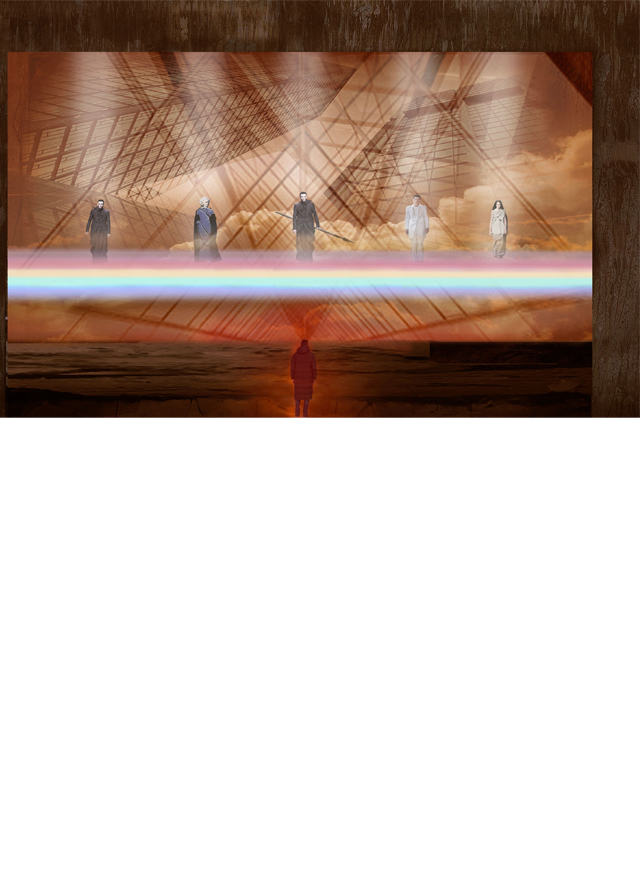
1 ⁄7
Preliminary rendering for the Dallas Opera production of Das Rheingold, set design by Erhard Rom.

2 ⁄7
Preliminary rendering for the Dallas Opera production of Das Rheingold, set design by Erhard Rom.
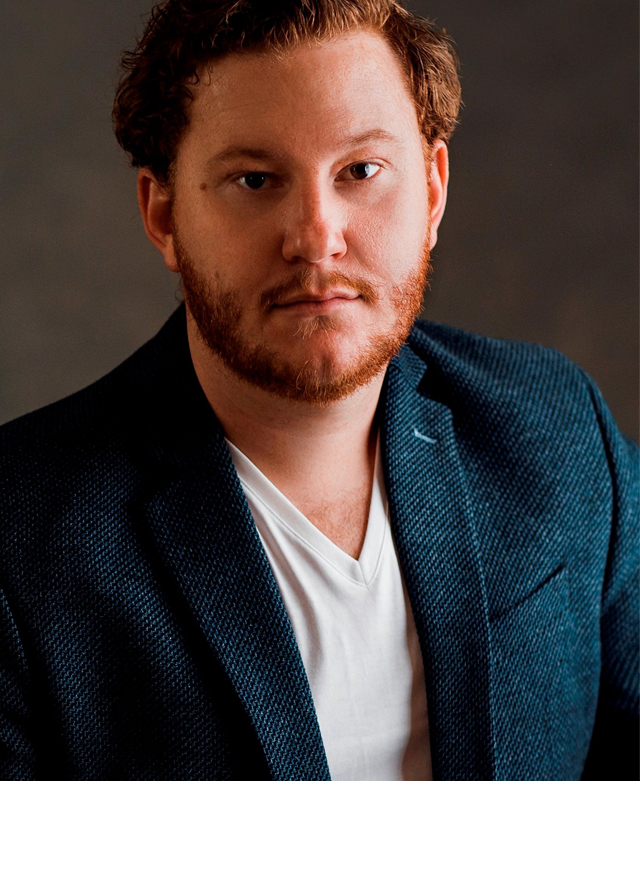
3 ⁄7
Nicholas Brownlee sings the role of Wotan in the Dallas Opera production of Das Rheingold. Photo courtesy of the artist.

4 ⁄7
Amanda Echalaz sings the role of Fricka in the Dallas Opera production of Das Rheingold. Photo by Fay Fox.

5 ⁄7
Costume sketch by Mattie Ullrich for Fafner for the Dallas Opera production of Das Rheingold.
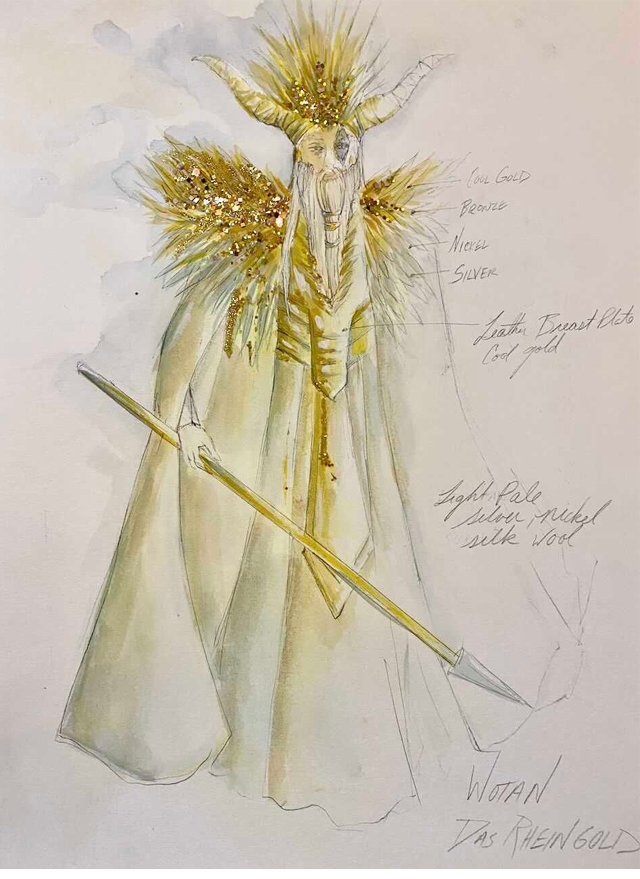
6 ⁄7
Costume sketch by Mattie Ullrich for Wotan for the Dallas Opera production of Das Rheingold.
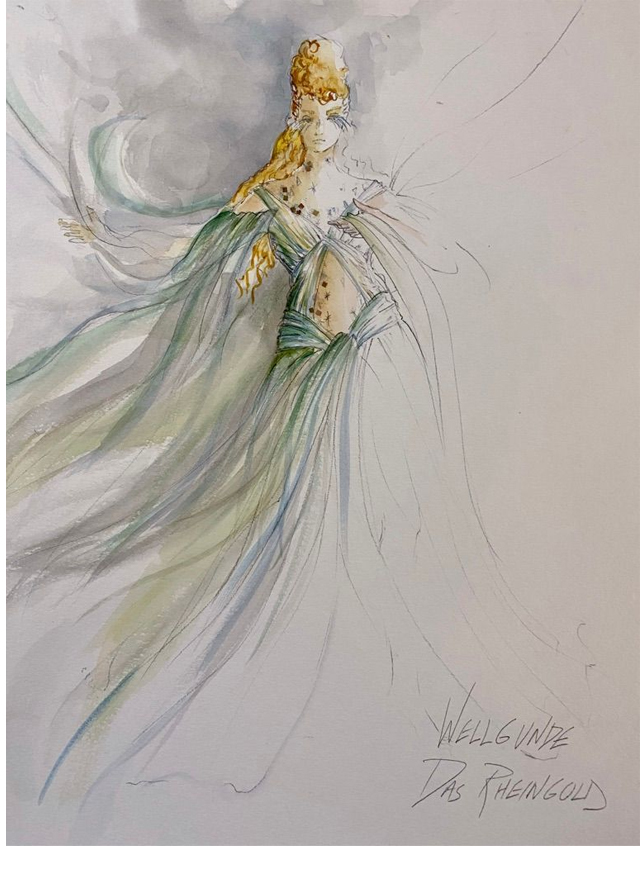
7 ⁄7
Costume sketch by Mattie Ullrich for Welgunde for the Dallas Opera production of Das Rheingold.
Rheingold by no means covers the whole trajectory. But Wagner filled it with theatrical challenges and opportunities.
The setting travels from the Rhine to the gods’ lofty realm to Alberich’s underground lair. Alberich shape-shifts into a dragon and a toad, thanks to a magic helmet. At the opera’s climax, fog dissipates to reveal Valhalla in its splendor.
In recent decades, Zvulun writes, directors have transplanted the Ring to settings ranging from the Industrial Revolution to modern-day Las Vegas. Usually, the plot lines and themes don’t really match the new milieu, “and something is lost.”
“Our production,” he continues, “does not reduce the Wagnerian world to a specific time and place, but rather creates a timeless…world that highlights an alternative reality of fantasy and myth.”
For Rheingold, Derrer says, designer Erhard Rom begins with a sloping platform fitted out with trap doors, allowing eye-catching entrances and exits. Above that will be “a multitude of curtains we use for projection surfaces. One is a cloth curtain that looks like ribbons. And an LED wall will be used to great effect upstage.” The total is “a wonderful mixture of advances in technology that allow us to do new things (alongside) conventional elements that enhance the special effects.”
“We opted for the latter,” he continues. “The vast majority of them are making role debuts.” This will be conductor Villaume’s first Rheingold, too.
“There’s a lot of energy in just the newness of the piece for these people,” Derrer says. “There’s great joy in the discovery process.”
At the top of Wagner’s cosmic order, bass-baritone Nicholas Brownlee will portray Wotan. Brownlee, who was Colline in Dallas Opera’s 2019 production of La Boheme, will bring the role a voice of “great nobility and deep, dark color,” Derrer says. Another powerful baritone, Michael Mayes—who has performed with both Dallas and HGO—will play the malevolent Alberich.
As Alberich’s brother, Mime—master of the all-important forge—Dallas Opera brings back tenor Barry Banks, who portrayed the Astrologer in Rimsky-Korsakov’s Le coq d’or in 2019. “He has amazing flexibility and versatility in his voice,” Derrer says. “A role like Mime is about the actor. It’s about the character. It’s about the color in the words.”
“You have to figure out, where are they going to be? How many are going to be playing? What particular anvils are you going to use? These are all important questions you have to work on,” Derrer says. “We’ve got a plan. But nothing is truly resolved until you get into the theater and it works.”
-STEVEN BROWN




